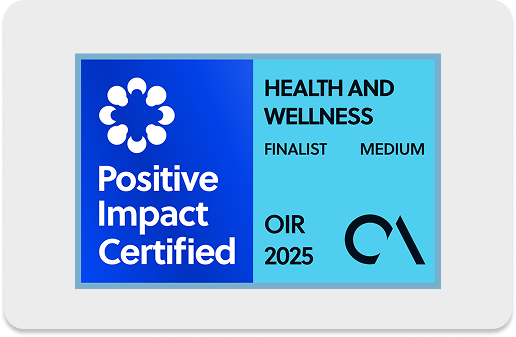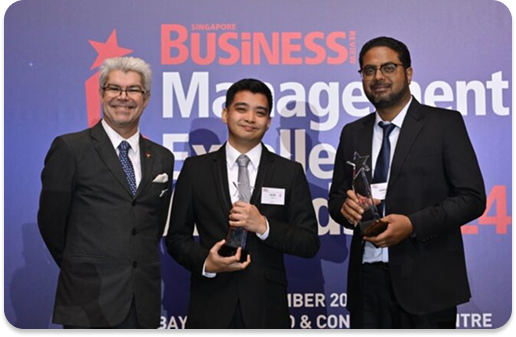In today’s dynamic customer service world, businesses must stay agile and efficient to meet ever-evolving demands. Call centers, often at the frontline of customer interaction, are constantly pressured to streamline operations while delivering top-notch service.
One powerful strategy gaining traction is the blended process, a method that merges inbound and outbound call functions for maximum productivity. But what exactly is a blended process, and why is it becoming a game-changer for call centers?
In this blog, we’ll explore the blended process’s meaning, operation, key benefits, and how it shapes the future of modern call centers. So stick around!
What Is The Blended Process?

The blended process refers to a call center’s approach that integrates both inbound and outbound activities. Traditionally, call centers were separated into two departments. Inbound agents handle incoming customer calls and queries, while outbound agents make outgoing calls for sales, marketing, or customer follow-ups.
The blended process unifies these two functions, allowing agents to switch between handling incoming and outgoing calls depending on the demand and workflow.
In simple terms, a blended process makes customer service teams more versatile and responsive. By allowing agents to seamlessly switch between roles, it ensures that call center resources are optimally utilized, reducing customer wait times and increasing agent productivity.
To better understand the meaning of the blended process, it’s important to dive into its core concept: flexibility.
Call centers don’t limit agents to a single function in a blended process. Instead, they are trained to handle both inbound and outbound calls, which means they can handle different types of customer interactions.
For example, suppose there is a low volume of incoming calls. In that case, the same agents can switch to outbound tasks, such as following up on previous inquiries, conducting customer satisfaction surveys, or making sales calls.
On the other hand, during a surge in inbound call volume, the agents focused on outbound activities can quickly shift to assist with incoming queries.
Blended Processes Meaning And Operation In Call Centers
The implementation of blended processes in call centers has grown in popularity due to its ability to maximize resources. In this type of operation, customer service agents are versatile and capable of managing diverse tasks, creating a more dynamic and efficient environment.
Here’s a closer look at how blended processes in call centers operate:
1. Call Distribution Technology
One of the core elements that makes the blended process so effective in call centers is the use of call distribution technology. Most call centers rely on automatic call distribution (ACD) systems to ensure a seamless and efficient flow of both inbound and outbound calls.
These systems intelligently route inbound calls to the most suitable agents based on availability, skill sets, or language proficiency. This targeted distribution of calls helps ensure that customer queries are handled by the appropriate agents, reducing wait times and enhancing overall customer satisfaction.
On the outbound side, predictive dialers streamline the process. These dialers automatically call a list of numbers, maximizing the efficiency of outbound campaigns by reducing the time agents spend dialing manually.
Predictive dialers use algorithms to estimate when an agent will be available to take the next call and ensure that the dialing process matches the agent’s availability.
It ensures minimal downtime between calls, allowing agents to focus on engaging with customers or potential leads rather than waiting for the next call to be connected.
2. Real-Time Monitoring And Adjustment
A significant advantage of the blended process is its real-time adaptability. In traditional setups, inbound and outbound call functions are kept separate, which can lead to inefficiencies when call volumes fluctuate.
However, with a blended process, call center managers can monitor call volumes in real-time and make adjustments instantly.
For instance, if there is an unexpected surge in inbound calls, managers can quickly shift outbound agents to handle the increased workload. This method ensures customers aren’t left waiting on hold for too long and helps maintain service levels during peak periods.
Similarly, when the volume of incoming calls decreases during slower times, managers can redirect inbound agents to outbound tasks like following up on sales leads, conducting customer surveys, or other proactive customer outreach initiatives.
This flexibility to shift between roles keeps agents productive and ensures that no resources are underutilized, making the blended process a highly adaptable and efficient operational model for call centers.
3. Skill-Based Routing
The success of the blended process heavily relies on skill-based routing. Not all agents are equally adept at handling the same type of calls, and the blended approach takes this into account by matching incoming customer calls to the agent best equipped to handle that specific query.
This method ensures that complex or technical inquiries are routed to agents with specialized knowledge, while simpler queries can be directed to generalists. This minimizes the need for call transfers and reduces customer frustration.
Skill-based routing applies to outbound activities in much the same way. Cold-calling or following up with leads requires skills different from resolving customer service issues.
Therefore, outbound tasks can be assigned to agents specializing in sales, customer retention, or market research, maximizing the effectiveness of these campaigns.
The blended process improves call center efficiency and enhances customer satisfaction by ensuring that the right agent handles the right type of call.
4. Workforce Optimization
One of the blended process’s most significant advantages is that it optimizes the workforce. In traditional call center setups, outbound agents often experience periods of inactivity, especially during off-peak hours or when there aren’t enough leads to follow up on.
An idle time can result in inefficiencies and lost productivity. A blended process drastically reduces idle time because agents are no longer restricted to just inbound or outbound tasks. If there is a lull in inbound calls, outbound campaigns can be ramped up, allowing agents to remain engaged and productive.
Conversely, during high inbound call volume periods, outbound agents can be switched to handle these incoming queries. This dynamic allocation of tasks ensures that all agents are consistently working, making the most of their time and skills.
By reducing idle periods and keeping agents consistently occupied, the blended process improves overall workforce productivity and helps maintain a higher level of service across both inbound and outbound functions.
The blended process’s ability to adapt to changing call volumes and customer needs makes it an essential strategy for call centers looking to optimize their operations.
Benefits Of The Blended Process In Call Centers
Implementing a blended process comes with several advantages that can significantly improve the efficiency and profitability of call centers:
Increased Productivity
One of the primary benefits of the blended process is its potential to boost productivity. Keeping agents consistently engaged—whether through inbound or outbound calls—minimizes idle time. This ensures that every available resource is put to work, increasing overall output.
Enhanced Customer Experience
The blended process reduces customer wait times by allowing for efficient call volume management. Faster response times lead to greater customer satisfaction, as issues are resolved more swiftly.
Additionally, agents equipped to handle both inbound queries and outbound follow-ups provide a seamless customer journey, improving the overall experience.
Cost-Effectiveness
The blended process can help call centers save on operational costs. Instead of needing two separate teams—one for inbound and one for outbound tasks—call centers can rely on a single team to manage both functions.
This minimizes the necessity for hiring extra staff and cuts down on costs associated with downtime.
Flexibility In Operations
As market conditions change, so do customer needs. A blended process allows calling centers to adapt quickly to fluctuating call volumes.
During busy periods, more agents can focus on inbound calls, while during quieter times, the focus can shift to outbound activities like lead generation and customer retention efforts.
Better Performance Management
The blended process allows for more efficient tracking of agent performance. Managers can review metrics for both inbound and outbound activities, providing a well-rounded picture of each agent’s strengths and areas for improvement.
Performance evaluations can be more comprehensive, leading to targeted training and development opportunities.
Challenges Of Implementing The Blended Process
While the blended process offers numerous benefits, it does come with some challenges:
- Training and Skill Development: Agents need to be trained to handle both inbound and outbound tasks, which can require additional time and resources.
Moreover, not all agents may excel in both areas, meaning call centers must invest in continuous training to ensure all agents can meet the demands of a blended process.
- Technology Dependence: The success of a blended process relies heavily on the right technology. Call centers must invest in robust ACD systems and predictive dialers to distribute calls efficiently. Poor technology infrastructure can hinder the effectiveness of the blended process.
- Performance Pressure: As agents handle both inbound and outbound tasks, they may feel increased pressure to perform well across multiple areas. Call center managers need to ensure agents are supported and can handle the demands of the blended process.
Conclusion About The Blended Process
The blended process represents an innovative and practical approach to managing call centers. It enables increased flexibility, enhanced productivity, and cost savings while enhancing customer satisfaction.
By understanding the meaning of the blended process and implementing it effectively, call centers can stay competitive in today’s customer-driven world.
As with any operational shift, adopting a blended process requires careful planning, training, and investment in the right technology. However, when done right, it can significantly improve call centers’ performance, making them more adaptable and better equipped to meet customer demands.
Maximize your call center’s potential by partnering with Gear Inc. We specialize in offering customized solutions for your business needs, from expert training to cutting-edge technology support. Let us help you optimize your operations and achieve superior results.
Get in touch with Gear Inc today to explore how we can elevate your call center’s performance and customer satisfaction.
Frequently Asked Questions About The Blended Process
Can Any Call Center Implement The Blended Process, Or Are There Specific Requirements?
While most call centers can adopt a blended process, they need specific technology, such as Automatic Call Distribution (ACD) systems and predictive dialers, to ensure smooth operations. Additionally, call centers must train agents to handle both inbound and outbound tasks effectively.
How Does The Blended Process Impact Agent Job Satisfaction?
The blended process can increase job satisfaction by providing variety in daily tasks, which helps prevent monotony. However, some agents may find switching between inbound and outbound roles challenging, making proper training and support essential.
Does The Blended Process Work For Both Small And Large Call Centers?
Yes, the blended process can benefit both small and large call centers. Smaller call centers can optimize their limited workforce, while larger centers can reduce the inefficiencies caused by compartmentalizing tasks.
The key is to ensure that both types of centers have the necessary technology and resources to implement the process smoothly.
How Does The Blended Process Affect Performance Metrics And KPIs?
The blended process allows calling centers to track a broader range of performance metrics, including response times for inbound calls and conversion rates for outbound calls. As agents switch between roles, managers need to adjust KPIs to reflect their dual responsibilities and measure both sets of tasks effectively.

















